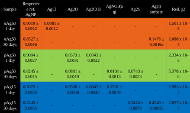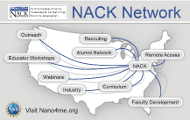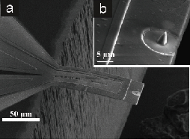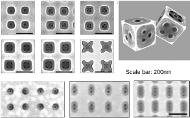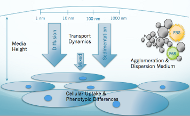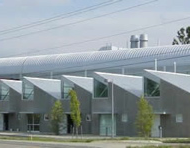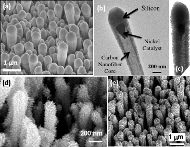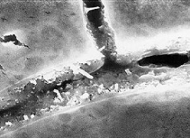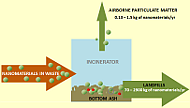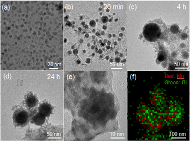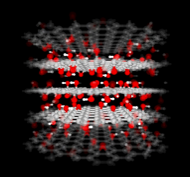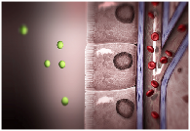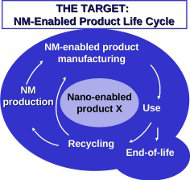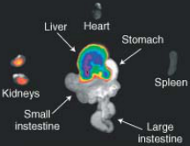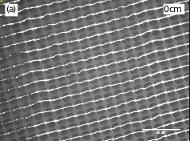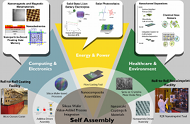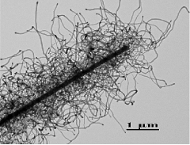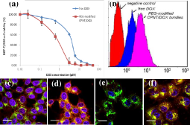Trends in Environment and Nanomanufacturing
The Conference is a combination of keynotes, panels, posters, program information sessions, discussions of research trends, and principal investigator meetings with NSF program directors.
- Day 1: Nanomaterial Metrology and Environmental Fate and Effects from Nanomaterials
- Day 2: Visionary Nanomaterial Applications, Sustainable Development, and Environmental Modeling and Risk Assessment
- Day 3: Current and Future Trends in Nanomanufacturing
Day 1: Wednesday, December 4, 2013
Focus on Metrology and Environmental Fate
and Effects from Nanomaterials
| Plenary Conference Room, Westin Hotel, Arlington | |
| 7:30 | Coffee and continental breakfast |
| 8:10 | Conference welcome and purpose of the meeting Gregory V. Lowry, Carnegie Mellon University, Academic Conference Organizer |
| 8:20 | Welcome at NSF Altaf H. Carim, Assistant Director, White House Office of Science and Technology Policy |
| 8:30 | Nanoscale Science and Engineering at NSF Mike Roco, NSF |
| 8:45 | Nanoscale Science and Engineering at EPA Will Boyes, US EPA |
| 9:00 | NNI in NSF BIO Directorate Alan Tessier, NSF |
| 9:15 | Nanoscale Science and Engineering at USDA Hongda Chen, USDA |
| 9:30 | Discussion |
| 9:40 | Keynote Speaker: Nanotechnology and the Environment - Overview of Day 1 Goals Gregory V. Lowry, Carnegie Mellon University |
| 10:00 | Refreshment break and poster visitation Note: the space for all posters will be available from December 4, 10 a.m. to December 6, 3 p.m. |
| 10:30 | Panel 1: New Approaches to Measurement and Metrology for NMs in Complex Matrices Moderators:
Example questions addressed in this topic: What are the state of the art tools for detecting and characterizing ENMs in complex biological and environmental matrices? What tools still need to be developed? What are the needs for standard methods and instrumentation? |
| 12:00 | Working lunch International NSE opportunities at NSF Nicolas Segebarth, European Commission U.S.-E.U. Collaboration in Nano-EHS: Workshop Summary |
| 1:00 | Keynote Speaker: Opportunities and Challenges for the Nanotechnology Research Community Peter Vikesland, Virginia Tech |
| 1:30 | Panel 2: Environmental Fate and Effects of Metal and Metal Oxide NMs Moderators:
Example questions addressed in this topic: How do metal/metal oxide nanomaterials distribute in the environment, interact with organisms, and cause effects? What properties of metals/metal oxides or media/organism properties control transformation and bioaccumulation? What testing can assess transformation and bioaccumulation potential, and toxicity? What are principle exposure routes? What is known and agreed upon about these topics after a decade of studying them? What are the critical gaps in understanding and how can we best address these gaps? |
| 3:00 | Refreshment break |
| 3:30 | Panel 3: Environmental Fate and Effects of Carbonaceous NMs Moderators:
Example questions addressed in this topic: How do carbonaceous nanomaterials distribute in the environment, interact with organisms, and cause effects? What properties of the materials or media/organism properties control transformation and bioaccumulation? What testing can assess transformation and bioaccumulation potential, and toxicity? What are principle exposure routes? What is known and agreed upon about these topics after a decade of studying them? What are the critical gaps in understanding and how can we best address these gaps? |
| 5:00 | Advances in Optical Microscopy and Hyperspectral Imaging for Nanomaterials Sam Lawrence, CytoViva |
| 5:15 | Wrap up for Day 1 |
| 5:30 | Adjourn |
| 6:00 | Hors D'oeuvres / Cash Bar (Sponsored by CytoViva) |
Day 2: Thursday, December 5, 2013
Focus on Visionary Nanomaterial Applications,
Sustainable Development, and Environmental
Modeling
and Risk Assessment
| Plenary Conference Room, Westin Hotel, Arlington | |
| 7:00 | Coffee and continental breakfast |
| 8:00 | Welcome: Nanoscale Science and Engineering in MPS Fleming Crim, NSF Assistant Director for MPS |
| 8:15 | Keynote Speaker: Safer by Design: Success Stories for Nanomaterials Jim Hutchison, University of Oregon - ONAMI |
| 8:45 | Panel 4: Novel “Responsive” Hybrid Nanomaterials and Applications Moderators:
Example questions to be addressed: What types of “horizon” nanomaterials are expected to enter the market in the near term? What types of “active” and hybrid nanomaterials are entering the market? How are the potential environmental implications of these materials being considered in their design? |
| 10:15 | Refreshment break and poster visitation |
| 10:30 | Panel 5: Trends in Exposure and Effects Modeling and Risk Assessment Moderators:
Example questions addressed in this topic: What is the state-of-the-art with respect to environmental fate models for NMs? What do these models tell us about the risk of exposure to ENMs in a variety of environments? Who is exposed, and to what are they exposed? What is needed to assess exposure risks? What are the research gaps? |
| 12:00 | Working lunch Keynote Speaker: The Science of Science Communication Applied to Nanotechnology abstract Dietram Scheufele, University of Wisconsin - Madison |
| 1:00 | Panel 6: Nanotechnology and Society and Education Moderators:
Example questions addressed in this topic: How can we address the challenges of communicating with the public about risk around topics where there is a high degree of uncertainty? How can we build stronger bridges between the scientific community and the public, through effective communication and public engagement? How can we guide students in developing habits of inquiry and exploration into the broader social, ethical, and economic aspects of their research? How can we guide students in developing effective science communication skills for use with both science professionals and general audiences? |
| 2:30 | Refreshment break and poster visitation |
| 3:00 | Panel 7: Sustainable Nanomaterials and Nanomanufacturing Moderators:
Example questions to be addressed. What upstream and downstream considerations are needed to make ensure sustainability? What unique nano-specific considerations must be made for nanomaterial LCA? |
| 4:30 | Environmental Panel Wrap-Up Discussion |
| 5:00 | Short Course on NanoHub Gerhard Klimeck, Purdue University, NanoHub |
| 5:30 | Break for the Day |
Day 3: Friday, December 6, 2013
Focus on Current and Future Trends
in Nanomanufacturing
| Plenary Conference Room, Westin Hotel, Arlington | |
| 7:30 | Coffee and continental breakfast |
| 8:15 | Welcome: "Manufacturing at NSF" Pramod Khargonekar, NSF Assistant Director for Engineering |
| 8:30 | Keynote Speaker: Nanomanufacturing: State-of-the-Science Overview of Day 3 Goals Ahmed Busnaina, Northeastern University Academic Conference Organizer |
| 9:00 | Panel 8: New Concepts for Nanomanufacturing Moderators:
Example questions addressed in this topic: What are the state of the art processes and tools that could be used to nanomanufacturing sustainable? What tools need to be developed? How can we assess sustainability and characterize economic, ecological and societal interactions in a nano-enabled product’s life cycle. |
| 10:15 | Refreshment break and poster visitation |
| 10:30 | Panel 9: Scalable Nanomanufacturing Moderators:
Example questions addressed in this topic: How to precisely conduct the heterogeneous assembly (nanomanufacturing) of diverse nanomaterials on diverse substrates? How could the newly developed nanomanufacturing processes be scaled? What are the research barriers to integrating new nanomanufacturing processes. What are the cross-cutting barriers? |
| 12:00 | Working lunch |
| 12:30 | Nanomanufacturing at NSF Khershed Cooper, NSF |
| 12:45 | Innovation I-Corps Program Rathindra "Babu" DasGupta, NSF |
| 1:00 | Panel 10: Nano-enabled Integrated Systems Moderators:
Example questions addressed in this topic: What nano-enabled products are near maturity (near term applications)? What are the long-term applications? What is the role of nanomanufacturing in applications that utilize nanomaterials buy may not have nanoscale features? What are the research gaps? |
| 2:15 | Refreshment break and poster visitation |
| 2:30 | Panel 11: Advances in Modeling Nanomanufacturing Processes Moderators:
Example questions addressed in this topic: How atomistic, molecular and continuum modeling could help address many of the fundamental challenges in nanomanufacturing? How could modeling address directed assembly of various nanoelements at the component and system level. How could modeling enable the controlling of interfacial forces during nano manufacturing and tailoring the resultant properties? |
| 3:45 | Final Remarks Ahmed Busnaina, Northeastern University Greg Lowry, Carnegie Mellon University Mike Roco, NSF |
| 4:00 | Adjourn Meeting |


